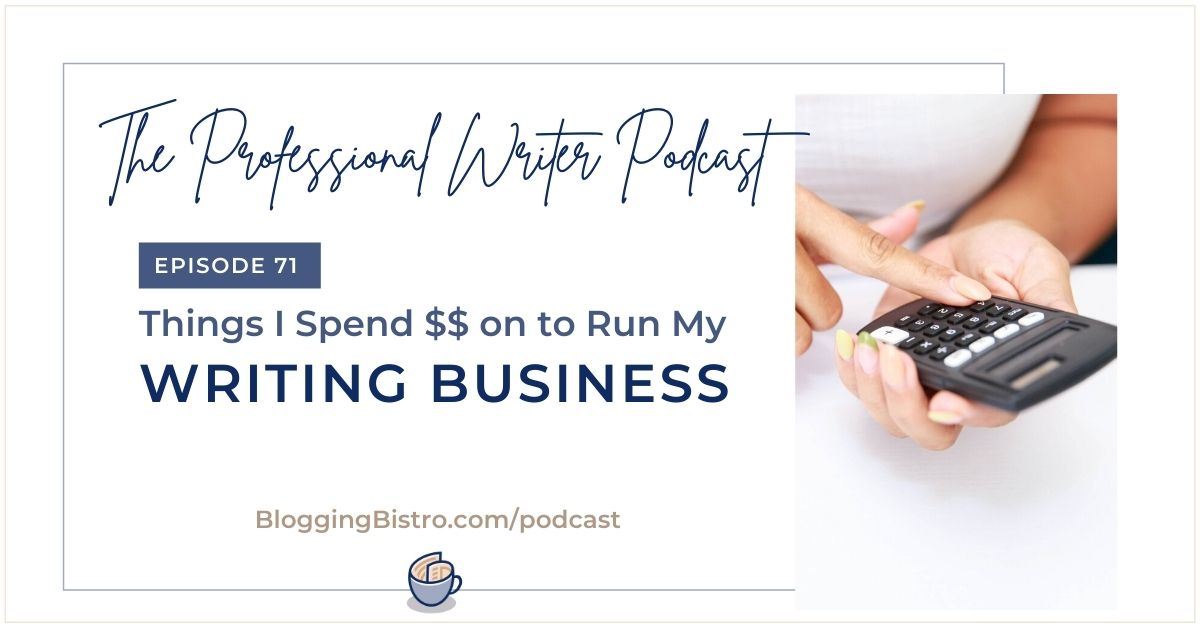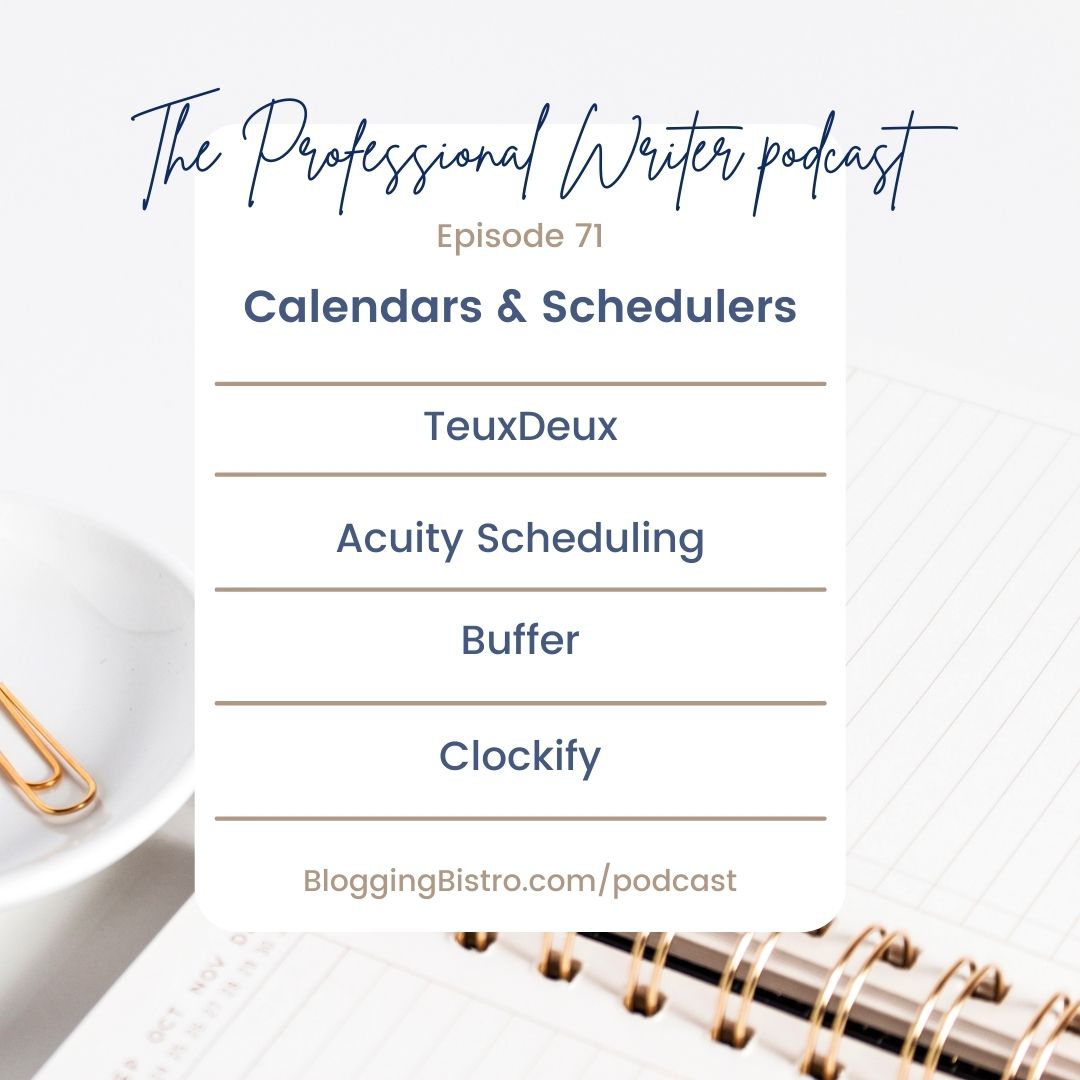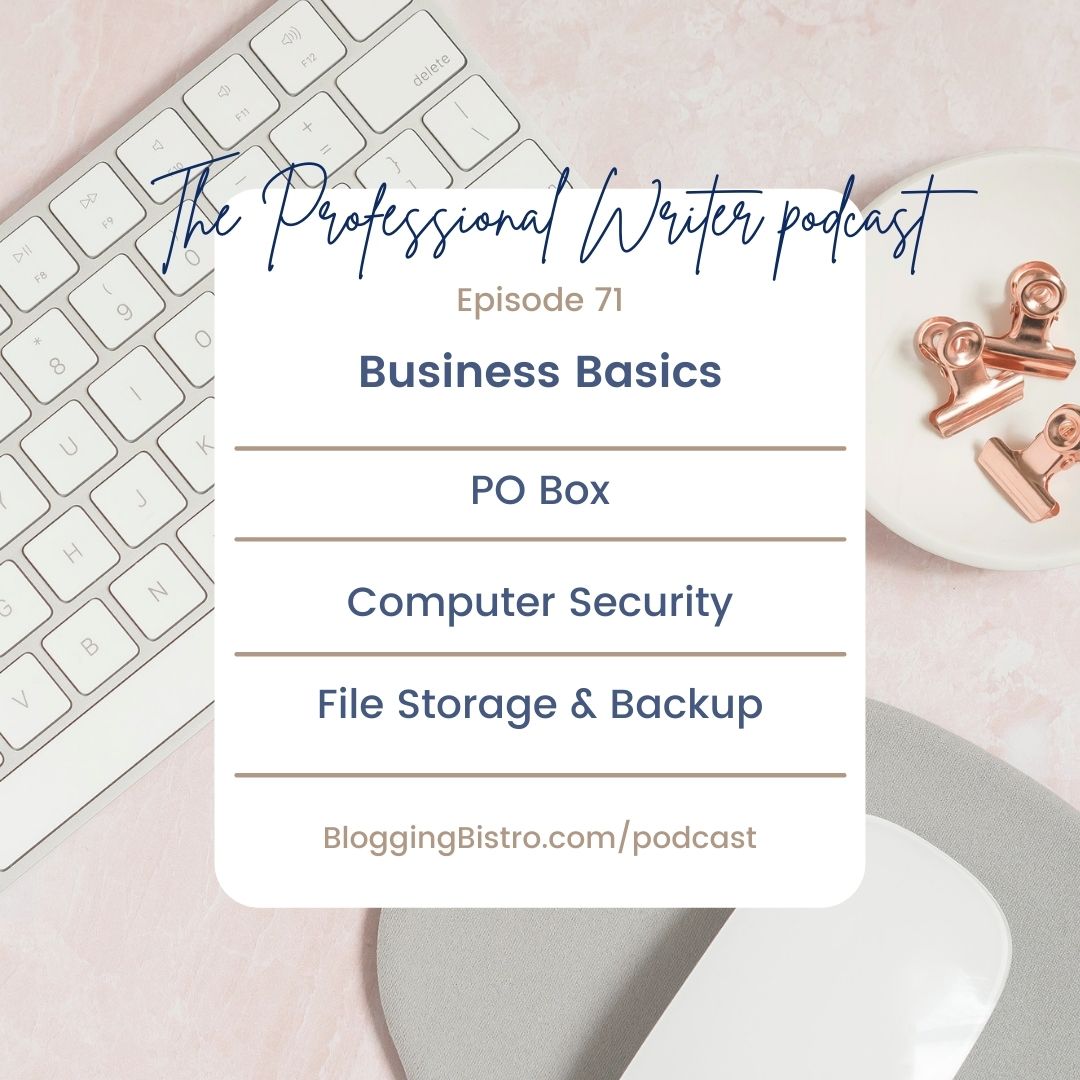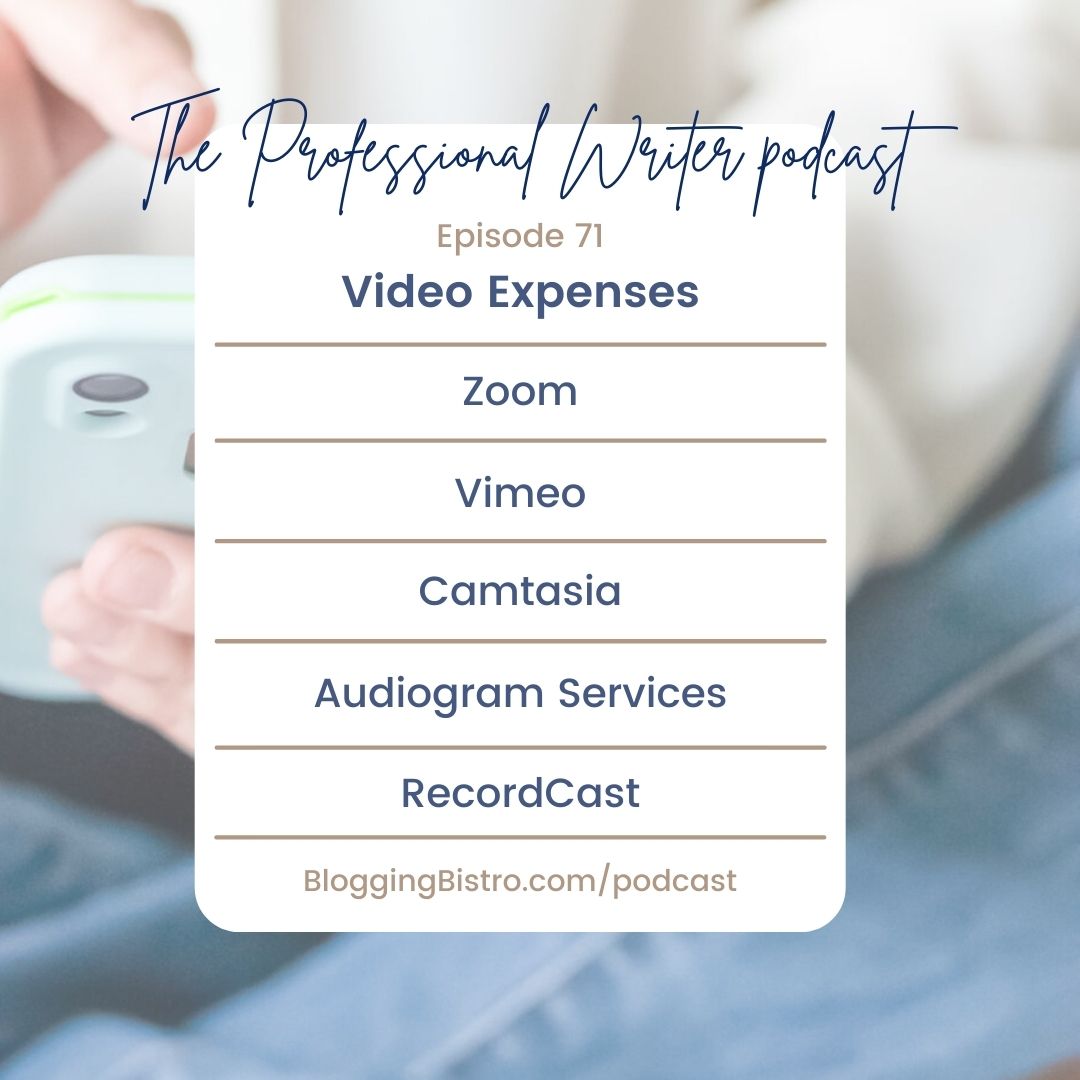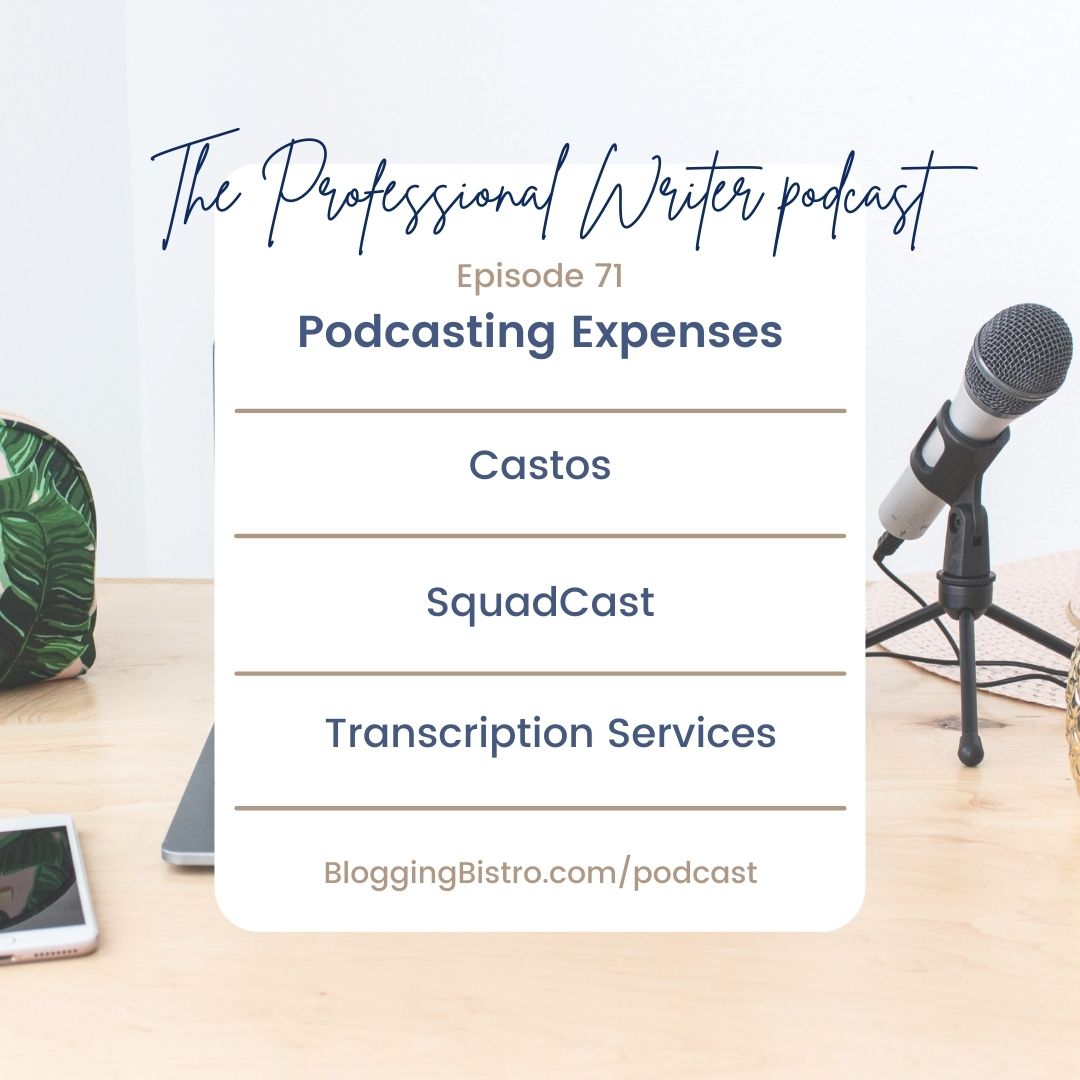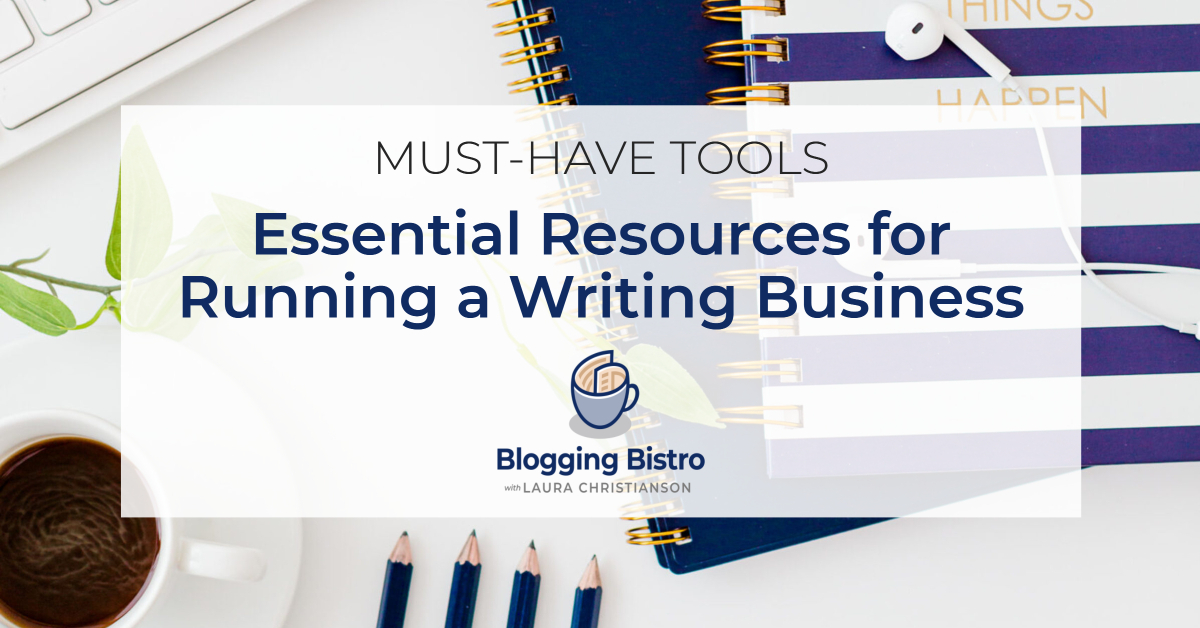71 – Things I Spend Money on to Run My Writing Business

We recently had our home re-sided with pre-painted siding. But there were certain areas we still needed to paint, namely the trim.
We vowed to do it ourselves, and started by re-painting our garage door and some shutters. It was detail work that required several coats of paint, so it was slow going. It wasn’t difficult, but after a few days of getting up close and personal with the paint can and not making significant progress, I’d had enough.
We collected estimates from several professionals and found a company that just happened to have a two-day gap in their schedule. They came out and, in a day and a half, had painted the trim around our entire house and touched up the areas I hadn’t done the best job on.
Yes, it cost a good chunk of change, but it looked far better than I could ever have done it, and the job was done efficiently.
For me, paying an experienced professional to do a job beautifully and quickly that I could have done adequately and slowly, was well worth my investment.
Today is Part 2 of my new series on investments for your writing business.
Today, I’m going to tell you exactly what I spend money on in my own writing-related business.
While I am very much a frugal do-it-yourselfer, I also believe in investing in services and people products who have skills that I lack, and who love doing things I hate doing, which frees me up to focus on doing the things I’m best at.
My “Always” Investment
One investment has been a staple my entire life. And that is donating a percentage of my income to charitable organizations.
When I was a kid, I received 50 cents per week in allowance. I put 25 cents in the church offering plate every Sunday and I got to keep the other 25 cents for myself. Church people call this “tithing.”
Word Nerd Moment
The Old English word “tithe” means “one-tenth,” which is why we often refer to a tithe as setting aside one tenth of our income for God.
As far back as I can remember, tithing – giving generously to organizations I care about – has been a normal part of my life.
If this practice is new to you, and you rarely or never donate a portion of your income to charitable organizations, I encourage you to begin doing this. It’s up to you whether you give based on your gross or net income.
If 10% feels like a lot, start with 1%. Each month, try to add one more percent until you are giving 10%, 20%, or, like I did when I was growing up, 50% of your income.
As I walk you through expenses to plan for, I suggest that you include a category titled “giving” or “tithing” or “charitable donations.”
Expenses To Plan For
- One-time expenses
- Annual expenses
- Monthly expenses
I calculated my yearly expenses for software and services I pay an annual fee for, and it is approximately $2,700 per year (a little over $220/month).
I began subscribing to many of the services I use years ago, which means I am on their “legacy” plans – where they don’t routinely raise the rates on me, but keep me as a customer by charging me what I paid when I first subscribed 10 or 15 years ago.
If you’re starting out, you’re going to pay more than I do for some of these services.
Don’t feel as if you have to sign up for all the services I use. I’ve been a business owner for nearly 15 years, and I have added on many of these expenditures slowly, over time.
Start small, with a few essentials, and add more as you earn income and profit and can afford to purchase new items.
Recommended Budget
Note: Some of the items below are affiliate links. If you purchase an item using my link, I will receive a commission, which goes towards funding The Professional Writer podcast. Thank you for supporting the podcast!
I recommend budgeting $2000-$4000 per year ($175-$350/month) for monthly fees for essential services.
That budget does not include one-time fees or sometimes-fees you’ll pay for SERVICES such as:
- Hiring a coach, mentor, editor, proofreader, cover designer for your book
- Purchasing a coaching program or course to help you learn or master a skill
- Attending in-person writers conferences, retreats (registration fees, pitch sessions with an agent or editor may be additional fee, as well as contest entry fees, plus travel, accommodations, and usually some meals) and virtual events
- Hiring someone to design your logo and/or any marketing collateral
- Hiring someone to design & program your website
- Hiring someone to edit and produce your podcast
One-time or some-times PRODUCT expenditures
*Note: I go into greater detail about many of these expenditures in the episode.
Computer/laptop/tablet – I invest in a new laptop every three years. My laptop is my #1 most-used business tool, and I like to use one that is fast, has enough space to store millions of files, and has handy USB ports for my external webcam and podcasting microphone.
External hard drive – For file backups.
Printer – I have a workhorse black-and-white high-speed laser printer, manufactured by Brother. I paid around $250 for it, and the laser cartridges last forever. I also have an ancient color printer, for the rare times I need to print in color.
Printer paper – I like buying printer paper from Amazon, because I can get just the amount I need – 1 ream, 3 reams, 5 reams, 8 reams, 10 reams, or a truckload (8,400 reams).
Scanner – About the only thing I use my scanner for is to scan client contracts.
Monitor(s) – Many writers, editors, and proofreaders love using dual monitors, or they use a vertical monitor or a monitor that swivels from horizontal to vertical. Editors, in particular, have told me that a vertical orientation makes writing, editing, and reading faster and easier, because it requires less eye movement than a horizontal configuration. Scrolling down the text, instead of back and forth, means less eye strain.
Rotating monitor: HP VH240a 23.8-Inch Full HD 1080p IPS LED Monitor
Wi-Fi (router) and/or Ethernet hard-wired cable connection to the Internet. If it’s available to you, an Ethernet connection is typically faster, more stable, and more secure than Wi-Fi.
Webcam – I use the Logitech C920x HD Pro Webcam ($89.99)
Podcasting microphone – you can use it not only for podcasting, but also for Zoom meetings, recording online workshops, Facebook Lives, etc. I recommend the Audio-Technica ATR2100x-USB Cardioid Dynamic Microphone, ($99). This mic plugs into the USB-C port on your laptop.
Headphones – Audio-Technica ATH-M20X Professional Studio Monitor Headphones ($49).
Cell phone – Having a phone is handy, especially if you work with clients, as I do. I use my phone for consults with clients who prefer not to use Zoom, for texting, Voxer walkie-talkie messages, social media DMs, and for managing my Instagram account.
Camera – For me, the camera on my cell phone serves my purposes. But many authors prefer to have a separate, digital SLR camera for snapping pictures for their blog, social media, website, products, etc.
Books – Switch between listening to an audiobook and reading the Kindle version with Whispersynch for Voice (by Audible) $15/month after 30-day free trial. (Separate membership from Amazon Prime).
3 Questions to Ask
Before investing in a service or tool, check to see whether they offer any or all of these three items:
- Free 14-day trial or 30-day trial.
- Free version – Usually a starter version with limited features. Do the free trial first, and then start with the free plan (unless you know you need a more feature-rich plan). You can upgrade to a paid plan when you’re ready.
- Discount for paying annually as opposed to paying monthly.
My annual expenses
CALENDARS AND SCHEDULERS
TeuxDeux – My favorite, simple task management tool! ($24/year)
Acuity Scheduling – Cloud-based appointment scheduling software. I love that Acuity integrates with Zoom, as well as with various email marketing services, video conferencing services, accounting and invoicing services, CRMs, and more. Acuity saves me a lot of time, since prospects and clients can self-schedule appointments at times that are convenient for both of us. Starts at $14-15/month.
Buffer – social media scheduler. Buffer‘s Pro plan starts at $35/month, billed monthly.
Clockify – Free time tracker and timesheet app that helps you track your work hours. Great for those of us who work with multiple clients on multiple projects.
BUSINESS BASICS
Post Office Box – I work from home, and do not want to make my home address public. Plus, email marketing services require you to publish a valid mailing address. The fee for a PO Box depends on which size you need (5 sizes available).
Computer Security Firewall – I use Norton 360, which secures five devices (for around $105/year). You must invest in some sort of antivirus and anti-malware software and password security software like Norton 360, McAfee, Windows Defender, Bit Defender, or Avast.
File storage and backup – The Dropbox Plus plan currently starts at $9.99/month. I also have an external hard drive stored in locking safe. (Other file storage and backup options include Google Drive, OneDrive, and Amazon Drive). For file backups, a lot of writers use three methods simultaneously: Cloud storage, external hard drive, and cloud backup services such as Carbonite.
WEBSITE AND EMAIL MARKETING
Website – I’ll be doing a podcast series on budgeting for and planning your website. Click here for details about our custom WordPress website design and development services.
Bluehost – A solid, reliable hosting service. Bluehost currently charges $2.95 per month for a 36-month contract for new customers, for a shared hosting plan, which includes domain registration for the first year year. Generally, you can expect to pay $10-$11 per month for their Basic plan.
Domain renewal – I buy domains (website addresses) through GoDaddy, a reliable, easy-to-manage service.
A couple of pointers: When you purchase (rent) a domain, make sure it includes SSL security (SSL should be included in your annual fee). You do not need to buy any of the many upsells they will try to tack on. Also, I do not recommend hosting your website with GoDaddy, nor do I recommend their website builder service.
When calculating your budget for domains, use this formula:
X number of domains x $23 apiece per year (average price for GoDaddy domains)
+ annual fee for SSL certificate (if extra)
= total amount
Routine website maintenance – If you plan to outsource website maintenance, your budget may include items such as troubleshooting plugins, updating to the latest version of your content management system and/or theme, fixing bugs, managing security updates, SSL installation, design and technical enhancements, and more. I budget around $500 per year for routine website maintenance.
If you’re thinking of building a first-time website or having your current site redesigned and you plan to outsource some or all of that work, fees can vary widely. Watch my informational video, “How Much Does a Website Cost?” (Video is about halfway down the page.)
Email Marketing – I have used AWeber for many years. Currently, their plans start at $16.15-$20/month for up to 500 subscribers (price varies depending on whether you pay monthly or annually). Another good starter email marketing service is Mailerlite.
Leadpages – I integrate Leadpages with AWeber so I can easily manage multiple lead magnets. Their Standard plan currently starts at $27 per month.
GRAPHICS AND EBOOKS
Canva – For years, I used Canva‘s free version to design social media graphics. A couple of years ago, I switched to Canva Pro ($12.99/month when paid monthly or $120/year, which equates to $9.99/month). The Pro version is definitely worth it.
Canva has a video editor that I haven’t tried yet. But I have heard from friends that the video editor makes it much easier to create Reels and Stories for Instagram Facebook, Tiktok, YouTube, and more. My first project with the video editor will be to create a slideshow video.
Ebook design – Affordable, easy-to-use software for designing lead magnets and ebooks. Designrr currently offers a $27 one-time fee.
Feminine Stock Photos:
Pixistock – Currently $97 per year for an annual membership, which includes full access to 7,000+ styled stock photos and Canva premium templates, 365-Day Content Calendar and Bundle, and two courses. Many of the stock photos feature women of color, as well as women of all shapes and sizes.
Styled Stock Society – Over 5,000 gorgeous images, plus customizable Canva templates and bonus resources. Three membership levels, starting at $97 per quarter.
VIDEO
Zoom – Because I do a significant amount of Zooming and do group coaching, I subscribe to the Pro plan, currently $14.99 per month or $150 per year.
Vimeo – Professional video hosting. A great deal for the Vimeo Plus plan, at only $7 per month (paid annually). 30-day free trial.
Camtasia – For video recording and editing. Camtasia releases a new version annually. $249.99 for the individual version.
Audiogram creation software – Convert audio clips into social videos that you can use to promote your podcast, blog, book – pretty much anything. These services have a free version, so test them all before investing in your favorite.
Screen Recorder – RecordCast is a free all-in-one screen recorder and video editor.
PODCASTING
Podcast hosting – I have hosted The Professional Writer podcast with Castos for nearly two years and have no complaints. If you use the self-hosted WordPress content management system, Castos offers a nifty plugin called Seriously Simple Podcasting, that makes displaying your podcast on your website a dream. $190 per year.
Squadcast interview recording – If you interview guests for your podcast (or for other purposes), you want a Zoomlike system that specializes in delivering high-quality audio recordings of each speaker. Squadcast does that. Starts at $20 per month or $220 per year for 5 hours of recording per month.
Transcription Services – Automatic (Artificial Intelligence, or AI) transcriptions are handy when you’re a podcaster, or when you want to dictate your book as you’re writing it and receive a transcription. Take these services for a test-drive and decide which one you like:
- Duplikit
- Temi
- Otter.ai
- Descript – A full-featured, all-in-one audio/video editor, screen recorder and automatic transcription feature. I’ve heard from a lot of podcasters who love Descript.
What’s Your Favorite Tool?
Do you have a favorite tool or service that you’d like me to feature in an upcoming episode?
Starting in the next episode, I’ll be sharing tools that my listeners recommend. We’ll look at:
- Professional Development Tools
- Writing Aids
- Publishing Tools
- Project Management Tools
- Promotional Tools
- Productivity Tools
Tell me about your favorite writing-related tool or service. Email me or join The Professional Writer Podcast Community Facebook group and post in one of our “tools” threads.
How to Keep Up With the Show
Click here to join my my email list and I’ll notify you about every episode. (When you subscribe, you’ll also get my free guide, Essential Resources for Running a Writing Business.)
Join The Professional Writer Podcast Community (private Facebook group), where we discuss what we’re learning, meet our guests, and encourage one another on our writing journeys.
If you know a writer who would be interested in The Professional Writer Podcast, please share this link with them:
https://bloggingbistro.com/podcast
Thank you!
Laura

